Table of contents
Use in the kitchen
When eaten raw and pure, the watermelon ( Citrullius lanatus ) is a low-calorie and vitamin-rich refreshment. Not only the pulp is edible raw, but also the seeds and the peel. When eating the peel, it is particularly important to clean the watermelon beforehand.
A sliced watermelon can be served as a vegan snack or aperitif without much effort. Fresh watermelon pieces also taste good in muesli, fruit salad or punch. Watermelon juice, mixed with a little water and served with ice cubes, is a simple but thirst-quenching and refreshing fruit drink. Boiled, reduced watermelon juice makes syrup for drinks or is good for sweetening and refining creams. Sorbets, smoothies, shakes or cocktails made from watermelon not only taste delicious, they also look colorful. There are also recipes for vegan melon lassis or cakes with watermelon. This means that even floury-tasting watermelons can be easily processed.
A traditional Sicilian dessert is watermelon pudding (known as gelo di miluni, gelo di anguria or gelo di melone). This consists of pureed watermelon, sugar, corn starch, vanilla and (sometimes) cinnamon . The pudding is traditionally served with a topping of chopped pistachios and chocolate chips to imitate the appearance of watermelon with seeds.
Watermelons are also suitable for savory dishes such as salads: For example, with avocados, vegan feta made from tofu (can also be made from almonds or cashews ), tomatoes, quinoa (or buckwheat, bulgur, couscous etc.) and lemon juice ( lime juice ), a great dish can be conjured up in no time. Seeds or nuts such as hemp seeds, walnuts, pine nuts orpumpkin seeds refine the dish and fresh mint leaves, grated lemon peel, salt andpepper round off the salad perfectly. For raw food cuisine, a gazpacho (cold soup) with raw watermelons or cantaloupe melons is definitely worth a try. Here the sweet melon flavor meets sour vegetables such as raw cucumbers or tomatoes and hot spices such as chili and pepper. For a vegan carpaccio, you can use watermelon instead of the honeydew melon suggested in the recipe and refine it with rocket .
Vegan recipe with watermelon for a poke bowl
Ingredients (for 4 people): 1 kg raw watermelon (organic, low-seed, peeled), 2 tbsp tamari or soy sauce, 2 tbsp sesame oil, 4 tbsp rice vinegar, 1 spring onion, 4 tbsp sesame seeds .
Alternatively, you can reduce the amount of tamari or soy sauce a little - or replace it with sliced nori for the marinade. Rapeseed oil has a much better fatty acid ratio than sesame oil or tahini, provided the taste of sesame seeds is sufficient.
Preparation: Cut the watermelon into 2-3 cm pieces and put to one side. Finely chop the spring onion. Mix the ingredients for the marinade (sauce, oil and vinegar) in a bowl. Pour the marinade over the watermelon cubes and stir carefully. Sprinkle chopped spring onion and sesame seeds over the marinated sliced melon. Put everything in a bowl and leave covered in the fridge for at least 12 hours. A poke bowl (poke bowl) is prepared with cooked rice and vegetables (raw), arranged nicely next to each other, in a bowl: Finely chopped avocado, cucumber, red cabbage, etc. are ideal. The marinated watermelon imitates the traditional raw fish ingredient (according to the Hawaiian recipe) as a 'vegan tuna'.
Vegan recipes with watermelon can be found under the note: " Recipes that have the most of this ingredient ".
| Not only vegans or vegetarians should read this: Vegans often eat unhealthily. Avoidable nutritional errors . |
Purchasing - Storage
Watermelons can be found in large supermarket chains such as Coop, Migros, Denner, Volg, Spar, Aldi, Lidl, Rewe, Billa, Edeka or Hofer, often in controlled organic quality (organic quality). Watermelons can also be bought in organic supermarkets such as Denn's Biomarkt or Alnatura, and seasonally at the weekly market. Watermelons are available in stores in Central Europe from May to September . These fruits mostly come from southern Europe, where they are in season during this time ; in winter, imported goods are available from Central America and Brazil. 1 Occasionally you can also find domestic (locally grown) watermelons, e.g. from Switzerland.
When buying a watermelon, make sure it is ripe, as it hardly ripens after harvest. Unlike sugar melons, ripe watermelons do not give off any scent. Yellow spots indicate that the watermelon was left in the sun until it was fully ripe. The skin should be firm and not give way when pressed with a finger. 2 Ripe watermelons are said to make a hollow sound when you tap their skin. Connoisseurs even hear a vibration, as they conduct sound well. Ripe melons are also slightly heavier than unripe ones. 11 When a watermelon is cut open, you can tell how ripe it is by the intense color of the flesh and the small amount of white fruit beneath the green skin.
In the supermarket you occasionally come across varieties with yellow flesh, 2 which are also known as pineapple melons.
Cracks and "holes" in the pulp (so-called hollow hearts) can be caused by natural growth disorders and are not usually an indication of the use of growth regulators. 18 You can find more information on this topic in the chapter Ecological Footprint - Animal Welfare.
The availability of watermelons varies depending on the size of the store, catchment area, etc. Our recorded food prices for the DA-CH countries can be found above under the ingredient image - and by clicking you can see their development at different suppliers.
Storage tips
Immediately after harvesting, the fruit should be cooled. Unripe fruit with a low sugar content can spoil quickly at temperatures below 10 °C. 2 The less sugar the fruit contains, the faster it spoils. For this reason, the storage temperature for watermelon transport companies in Europe is between 2 and 10 °C. 31
Fresh, whole watermelons will last for about 2-3 weeks at 12-15 °C and 85-90% relative humidity, or 1-2 weeks at room temperature. However, temperatures below 5-7 °C cause cold damage: the fruit loses its firmness and the skin becomes glassy. In addition, the flesh loses color at temperatures below 10 °C. According to the USDA, the lowest safe temperature for watermelons is 4.5 °C. 4 It is therefore not advisable for end consumers to store whole watermelons in the refrigerator. Watermelons do not ripen, but are sensitive to ethylene (ethene), a ripening hormone released by climacteric fruits (e.g. apples, bananas or kiwis ). When stored next to such fruits, the flesh takes on a soft, mealy consistency (some people find it sandy). 2
How should you store a cut watermelon? Cut melon pieces spoil quickly, which is why they should be eaten on the same day if possible. The raw flesh of melons is low in acid and provides a good breeding ground for harmful microorganisms such as salmonella, listeria or EHEC. These germs contaminate the flesh either directly when cutting it (pathogens get onto the flesh from the peel) or via contaminated hands or kitchen utensils (knives, cutting boards). To prevent infections, good kitchen hygiene is necessary and it is advisable to eat the melon pieces quickly or store them in a cool place. If stored unrefrigerated for several hours, the Federal Institute for Risk Assessment ( BfR ) recommends disposing of the fruit. 3
Ingredients - Nutritional values - Calories
100 g of a raw watermelon contains 30 kcal, so 1 kg of watermelon has about 300 calories. What does a watermelon consist of? The juicy flesh consists of around 91% water and around 6% sugar. Despite its sweetness, watermelon contains relatively little sugar. In comparison, bananas have a very high sugar content with 12 g of sugar per 100 g. With 0.61 g of protein and 0.15 g of fat per 100 g, watermelon is very low in protein and almost fat-free. The 1.6 g of fiber only covers 1.6% of the daily requirement. 4
A raw watermelon has 8.1 mg of vitamin C per 100 g, which is 10% of the daily requirement. Rhubarb (8 mg/100 g) and bananas (8.7 mg/100 g) have comparable amounts of ascorbic acid. Kiwis contain a high proportion of this antioxidant vitamin at 93 mg/100 g. 4
Watermelon contains 112 mg/100g of potassium (6.0% of the daily requirement). Pineapples (109 mg/100g) andapples (108 mg/100g) have a similar amount of potassium. One fruit with a lot of potassium is raw jackfruit, which contains 448 mg/100g. 4
The vitamin A content, as RAE, is 28 µg/100g (4.0% of the daily requirement). This is comparable to that ofblack elderberries (30 µg/100g) and guava (31 µg/100g). Sugar melons such as cantaloupe melons have a much higher vitamin A content of 169 µg/100g. This corresponds to 21% of the daily requirement. 4 We absorb vitamin A from plants as provitamin A in the form of carotenoids. Watermelons contain, among other things, the carotenoid lycopene, which is responsible for the red color and is one of the antioxidants, 15 but which has no provitamin A activity. 5
Effects on health
Do watermelons have any health effects? Watermelons are a low-calorie thirst quencher and also have numerous health-promoting ingredients. A double-blind, placebo-controlled study from Brazil shows, for example, that watermelon extract lowers systolic and diastolic blood pressure. The amino acid citrulline is responsible for this, which the body converts into arginine and has a vasodilating effect. The blood can circulate more easily, which lowers blood pressure. 6
Secondary plant substances
Many of the health effects of watermelons can be attributed to the secondary plant substances they contain. Our article on secondary plant substances provides an overview of the classification of substance groups, their occurrence in foods and possible effects on humans.
Watermelons contain the following secondary plant substances:
- Isoprenoids: Carotenoids : Lycopene, Beta-carotene, Alpha-carotene 24,27 ; Terpenes: Monoterpenes, Triterpenes (Cucurbitacin, Erythrodiol, Squalene) 24, 27 ; Terpenoids: Linalool 24 ; Saponins 25 ; Steroids 25
- Polyphenols: Phenolic acids: chlorogenic acid, vanillic acid, sinapic acid, ginkgolic acid 24,27 ; Flavonoids: flavones (luteolin, chrysoeriol, apigenin, isoorientin, isovitexin), flavonols (rutin, kaempferol, quercetin), tannins, coumarins, flavanones (eriodictyol, naringenin), flavanonols (taxifolin) 24,25,26 ; Phytoestrogens: lignans 27
- Alkaloids 25,27
However, it should be noted that the composition of secondary plant substances in watermelons can vary depending on the variety, time of harvest and growing conditions. Therefore, quantities are only of limited use and should only be understood roughly.
A systematic review of scientific articles on the health effects of watermelons concludes that positive effects can be seen on various ailments such as cardiovascular diseases, age-related complaints, obesity, diabetes, ulcers and various types of cancer. The health effects of watermelon are attributed to the presence of secondary plant substances with pharmaceutical value, such as polyphenols and isoprenoids such as the carotenoid lycopene. In addition to the fruit, extracts from the peel, seeds, sprouts and leaves also show medicinal properties. 26
The most common cultivated form with red flesh contains a high content of the carotenoid lycopene. 15 Antioxidants such as lycopene neutralize free radicals and reduce oxidative stress. Lycopene has a positive effect on cardiovascular or neurodegenerative diseases and on some types of cancer. However, the current state of research (as of 2013) shows that most people do not get enough of it through their diet. Unlike other micronutrients, there is neither a recommended nor a maximum daily dose for lycopene. 5
A controlled study on rats examined how a 15-day treatment with watermelon juice affected the animals' antioxidant status and whether it offered protection against alcohol-induced oxidative damage to the brain and liver. Compared to a control group that did not receive any juice, the results suggest that watermelon juice does indeed help to improve antioxidant status and protect the organs from the harmful effects of alcohol. The scientists involved attribute these effects to the lycopene it contains, other carotenoids and bioactive substances such as polyphenols. 25
The antioxidant effect of watermelon was also demonstrated in a research study with rats suffering from diabetes. After 14 days of watermelon juice administration, blood sugar levels were regulated, inflammation was inhibited and antioxidant processes were strengthened. This suggests that watermelon juice could be useful as a supportive therapy for diabetes and its complications. 28
Another study found a positive effect on male fertility. It was found that watermelon consumption can improve sperm quality, reverse erectile dysfunction, and increase the redox status of the testes and the secretion of testosterone and "gonadotropin hormone" (sex hormones). These effects are also attributed to the vitamins and antioxidants it contains, such as carotenoids and flavonoids. However, further studies, both in vivo and in vitro, are needed to draw reliable conclusions about the mechanism of action of these ingredients. 29
Dangers - Intolerances - Side effects
Is watermelon unhealthy? Diabetics are often advised not to eat watermelon because it has a high glycemic index. The glycemic index (GI) shows how much a food affects blood sugar levels. A high GI means that blood sugar shoots up quickly. Diabetics should avoid this. However, the GI alone leads to a distorted perception. The GI was developed for research purposes as a laboratory parameter and is not very practical for everyday nutrition. The number describes the reaction to the consumption of 50 g of carbohydrates from a certain food and not the reaction to 50 g of the food. This is why the so-called glycemic load (GL) was introduced, which takes carbohydrate density into account. The actual blood sugar reaction depends on various factors, which is why GI and GL should only be understood as guidelines. 16
The glycemic index of watermelon is approximately 72 17 (75 16 ). However, to achieve the effect of this calculated GI, one would have to eat around 800 g of watermelon. However, a portion of watermelon is more like 120 g and has a low glycemic load. Therefore, consuming watermelon in moderate amounts is also possible for diabetics. 17
At too high temperatures, harmful microorganisms can multiply very quickly on cut watermelons due to the low acid environment (see above, point Storage). This can lead to infections. 3
A watermelon allergy is rare, but can occur. Symptoms include a sore throat, stomach cramps, nausea, diarrhea and skin rash. Cross-reactions with an allergy to grass pollen are also possible. 7
Folk medicine - natural healing
Watermelons are said to have a diuretic and kidney-cleansing effect. 2
Ecological footprint - animal welfare
In conventional farming, growth regulators are used to influence the size of fruit and vegetables. One active ingredient (forchlorfenuron) became known through reports of exploding watermelons in China - it is suspected that this agent is being used excessively (2011). But cracks in watermelons are not always caused by forchlorfenuron. "Holes" (so-called hollow hearts) or cracks can also be caused by errors in pollination, which causes natural growth disorders. 18 Studies show that when forchlorfenuron is used correctly, only minimal residues of the agent can be detected in watermelons (around 0-4.5 μg/kg). 19 If you eat these watermelons, you are far from reaching the limit of 0.05 mg/kg as the permissible daily dose set by the EU. Forchlorfenuron is also permitted in conventional cultivation in some EU countries (GR, ES, FR, IT, PT). 20
Residue analyses by the Austrian NGO Global 2000 in 2020 showed that of 118 conventional products (fresh vegetables and fruit) tested for pesticides, all samples contained residues. This study looked at 151 different pesticides - 54% of the substances detected had harmful properties (carcinogenic, reproductively toxic, mutagenic or hormone-active). None of these products were classified as posing an acute health risk, although 19 of them exceeded the legal maximum levels. 22
In organic farming, attempts are made to avoid residues or to keep them as low as possible; 100% residue-free is almost impossible when heavy metal pollution, drift, cross-contamination or contamination during storage or transport are taken into account. In organic farming, and therefore also in the production of organic watermelons, the use of chemical-synthetic agents or genetically engineered pesticides is not permitted. 23
In general, improper use of pesticides is harmful to the most important pollinators of melon plants, honey bees. They are exposed to pesticides directly or through collecting pollen and can suffer physical impairments or weakened immune reactions if the exposure is too high. 21
On average, 235 litres of water are needed per 1 kg of watermelon. Compared to other fruits such as papaya (460 l/kg) or kiwi (514 l/kg), this is little. 30 However, irrigation for the production of watermelons can lead to massive groundwater depletion and environmental problems in certain producing countries. 12 During the peak season, watermelons come from European countries such as Spain and Italy. Thanks to shorter transport routes and less CO2 emissions, this means a smaller ecological footprint than products from other continents. However, Spain in particular is constantly struggling with water shortages, which is why the high water consumption of melon plants can have a particularly negative impact there. We recommend moderate and seasonal consumption.
For detailed explanations of various sustainability indicators (such as ecological footprint, CO2 footprint, water footprint), see our article: What does the ecological footprint mean? .
Worldwide occurrence - cultivation
The region of origin of the cultivated watermelon ( Citrullus lanatus var. lanatus ) was not clear for a long time. In addition to South Africa and West Africa, the northeastern part of Africa was also discussed as a place of origin. The latest genetic studies (2021) show that the Sudanese Kordofan melon ( Citrullus lanatus ssp. cordophanus ) is the closest related species to the domesticated watermelon. 8
Today, the cultivated varieties are grown worldwide in the tropics and subtropics as well as in the Mediterranean region. The main growing areas in Europe include Spain, Italy, Romania, Greece and Hungary (2019). 9 Melon cultivation in Switzerland is a niche production - the local temperatures are too cold. Only the mini watermelon 'Swiss Melody', a variety distributed by Unicorn SA from Fischbach-Göslikon, can withstand the cool temperatures in Switzerland. 10 Sugar melons from Switzerland are somewhat more common: cantaloupe melons (Charentais variant), honeydew melons and netted melons such as the Galia melon (Galia melon). Cultivation here is also negligible. In 2020, Switzerland produced just 4 tons, and imported 28,290 tons of sugar melons and 40,100 tons of watermelons. 11
Found in the wild
The cultivated watermelon ( Citrullus lanatus var. lanatus ) can certainly grow wild. There are also some wild watermelons, such as the Tsamma melon, lemon melon or cow melon ( Citrulla lanatus var. citroides ), which occurs in Africa as a very bitter wild form and is also cultivated there. The Tsamma melon is now also classified as a Citrullus amarus species. However, according to a study from 2014, this is not the original form of the watermelon we know. 13
Cultivation - Harvest Young
watermelon plants must always be started early (from around April); in June they can be planted in a compost-enriched bed (sandy, humus-rich soil) or in a large pot. It is important that the temperature (even at night) is more than 12 °C. The distance to the next plant should be at least 1 m, as it forms far-reaching tendrils. A greenhouse or foil tunnel provides the plant with the necessary warmth. Otherwise, a sunny but wind-protected spot is suitable. Watermelons need a lot of water, especially when they are forming fruit. Here you should use temperate rainwater and only water the root stem, not the leaves, as this will encourage the formation of mildew (fungus). In addition to the dull sound of the melon, the wilting leaves also indicate the degree of ripeness. 14 Depending on the variety and the weather, watermelons need 60-90 days to be ready for harvest. How much does a watermelon weigh? Cultivated watermelons can reach a weight of up to 100 kg, but they usually weigh between 4 and 25 kg. Smaller mini watermelons weigh between about 1.5 and 2 kg. With the help of hybrids, it is now possible to produce seedless fruits. 2
Further information
Is the watermelon a fruit or a vegetable? Melons belong to the gourd family and are therefore classified as fruit vegetables. They are annual plants that form climbing shoots that are up to several meters long. They are divided into watermelons (species: Citrullus lanatus ) and sugar melons (species: Cucumis melo ). The latter also includes the popular honeydew melons and cantaloupes. Sugar melons are botanically more closely related to cucumbers than to watermelons.
The taxonomy is not always clear. The cultivated form of watermelon is classified as subspecies Citrullus lanatus ssp. vulgaris (Schrad.) Fursa and occasionally also to the variety var . vulgaris . The dessert watermelon described here can be found under Citrullus lanatus, but also with the addition of the variety var. lanatus (Thunb.) Matsum. & Nakai. Occasionally the term Citrullus lanatus ssp. vulgaris var. lanatus can also be found.
The flesh of the watermelon is often red, but there are also green, yellow (also called pineapple melon), white and orange varieties. The seeds also have different colors (black, brown, red, green, white), shapes and sizes.
Alternative names
In German-speaking countries, there are common names for the watermelon: Angurie, Citrulle, Zitrullengurke, Arbuse, Pasteke or Wasserpäddem. An earlier Latin synonym of Linné was Cucurbita citrullus , Today Citrullus vulgaris is also a common term.
The name dessert watermelon is used to distinguish it from bitter subspecies of watermelon, which are usually only grown for their seeds. Pineapple melon often refers to the yellow-fleshed watermelon, but not exclusively. The misspelling of watermelon fruit can occur.
In English, watermelon is called watermelon, and watermelon with yellow flesh is called yellow watermelon.
Bibliography - 31 Sources (Link to the evidence)
| 1. | Apotheken-umschau.de Wassermelone: Kalorienarmer Durstlöscher. 2019. |
| 2. | BLE Bundesanstalt für Landwirtschaft und Ernährung. Wassermelonen. Produktinformation. Flyer März 2021. |
| 3. | BfR Bundesministerium für Risikobewertung. Melonen können krankmachende Keime übertragen. 22/2013. |
| 4. | USDA United States Department of Agriculture. |
| 5. | Cruz Bojórquez RM, González Gallego J, Sánchez Collado P. Revisión. Propiedades funcionales y beneficios para la salud del licopeno [Functional properties and health benefits of lycopene]. Nutr Hosp. Februar 2013;28(1): 6–15. |
| 6. | Massa NML, Silva AS, Toscano LT et al. Watermelon extract reduces blood pressure but does not change sympathovagal balance in prehypertensive and hypertensive subjects. Blood Press. August 2016;25(4): 244–8. |
| 7. | Pastor C, Cuesta-Herranz J, Cases B et al. Identification of major allergens in watermelon. Int Arch Allergy Immunol. 2009;149(4): 291–8. |
| 8. | Renner SS, Wu S, Pérez-Escobar OA et al. A chromosome-level genome of a Kordofan melon illuminates the origin of domesticated watermelons. PNAS. 8. Juni 2021; 118(23). |
| 9. | FAOSTAT Food and Agriculture Organization of the United Nations. Crops Watermelons. |
| 10. | LID Landwirtschaftlicher Informationsdienst. Höchste Zeit für Schweizer Wassermelonen. 2018. |
| 11. | LID Landwirtschaftlicher Informationsdienst. Süsse Exotin - die Schweizer Melone. 2021. |
| 12. | Pini U. Das Bio-Food Handbuch. Kleemann: Hamburg, Potsdam. 2014: 472. |
| 13. | Chomicki G, Renner SS. Watermelon origin solved with molecular phylogenetics including Linnaean material: another example of museomics. New Phytologist. 2015;205(2): 526–32. |
| 14. | Plantura.garden.de Wassermelone pflanzen: Experten-Tipps für den Anbau. |
| 15. | Sulaiman F, Ahmad Azam A et al. "M........." Profiles of Red and Yellow Watermelon (Citrullus lanatus) Cultivars Using a 1H-NMR Metabolomics Approach. Molecules 2020;25(14): 3235. |
| 16. | Diabetes-austria.com Glykämischer Index (pdf). |
| 17. | Medicalnewstoday.com Is watermelon high in sugar for people with diabetes? Diet tips and nutrition. 2021. |
| 18. | Trandel MA, Perkins-Veazie P, Schultheis J. Predicting hollow heart incidence in triploid watermelon (Citrullus lanatus). HortScience. 2020;55(12): 1926-1930. |
| 19. | Valverde A, Piedra L, Aguilera A, Boulaid M, Camacho F. Analysis and residue levels of forchlorfenuron (CPPU) in watermelons. Journal of Environmental Science and Health, 2007 Sept-Oct;42(7): 801-807. |
| 20. | Europäische Kommission. EU Pesticides database. 2022. |
| 21. | Pacifico dSI, Oliveira FAS et al. Pesticide exposure of honeybees (Apis mellifera) pollinating melon crops. Apidologie. 2015; 46: 703-715. |
| 22. | Global 2000. Statusbericht chemischer Pflanzenschutz. Obst und Gemüse. Wien. 2020. |
| 23. | Bio Suisse. Haltung von Bio Suisse zum Thema „Rückstände“. 2019. |
| 24. | Ilahy R, Tlili I, Siddiqui MW, Hdider C, Lenucci MS. Inside and beyond color: comparative overview of functional quality of tomato and watermelon fruits. Front Plant Sci. 2019;10:769. |
| 25. | Oyenihi OR, Afolabi BA, Oyenihi AB, Ogunmokun OJ, Oguntibeju OO. Hepato- and neuro-protective effects of watermelon juice on acute ethanol-induced oxidative stress in rats. Toxicology Reports. 2016;3:288–294. |
| 26. | Manivannan A, Lee ES et al. Versatile nutraceutical potentials of watermelon - a modest fruit loaded with pharmaceutically valuable phytochemicals. Molecules. 2020;25(22):5258. |
| 27. | Sorokina M, McCaffrey KS et al. A catalog of natural products occurring in watermelon - Citrullus lanatus. Front Nutr. 2021;8:729822. |
| 28. | Ajiboye BO, Shonibare MT, Oyinloye BE. Antidiabetic activity of watermelon (Citrullus lanatus) juice in alloxan-induced diabetic rats. J Diabetes Metab Disord. 2020;19(1):343–352. |
| 29. | Rotimi DE, Asaleye RM. Impact of watermelon (Citrallus lanatus) on male fertility. JBRA Assist Reprod. 2023;27(4):702–708. |
| 30. | Mekonnen MM, Hoekstra AY. The green, blue and grey water footprint of crops and derived crop products. Hydrol. Earth Syst. Sci. 2011; 15:1577-1600. |
| 31. | Marco A. Wassermelone: Lagerung, Transport und Konservierung. 2023. |

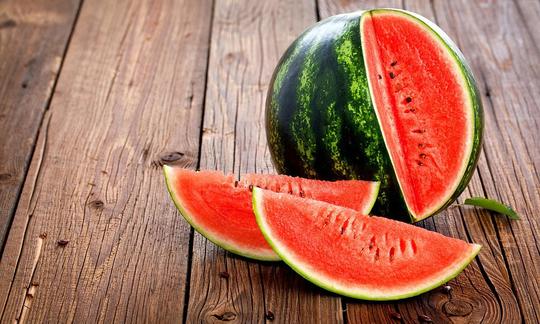

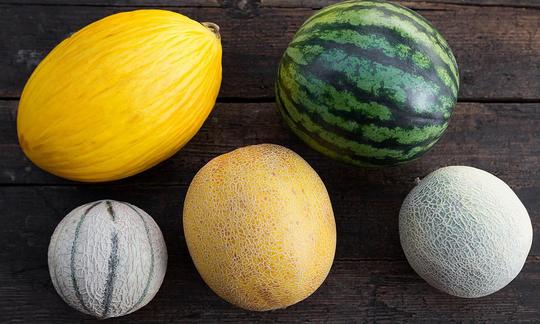


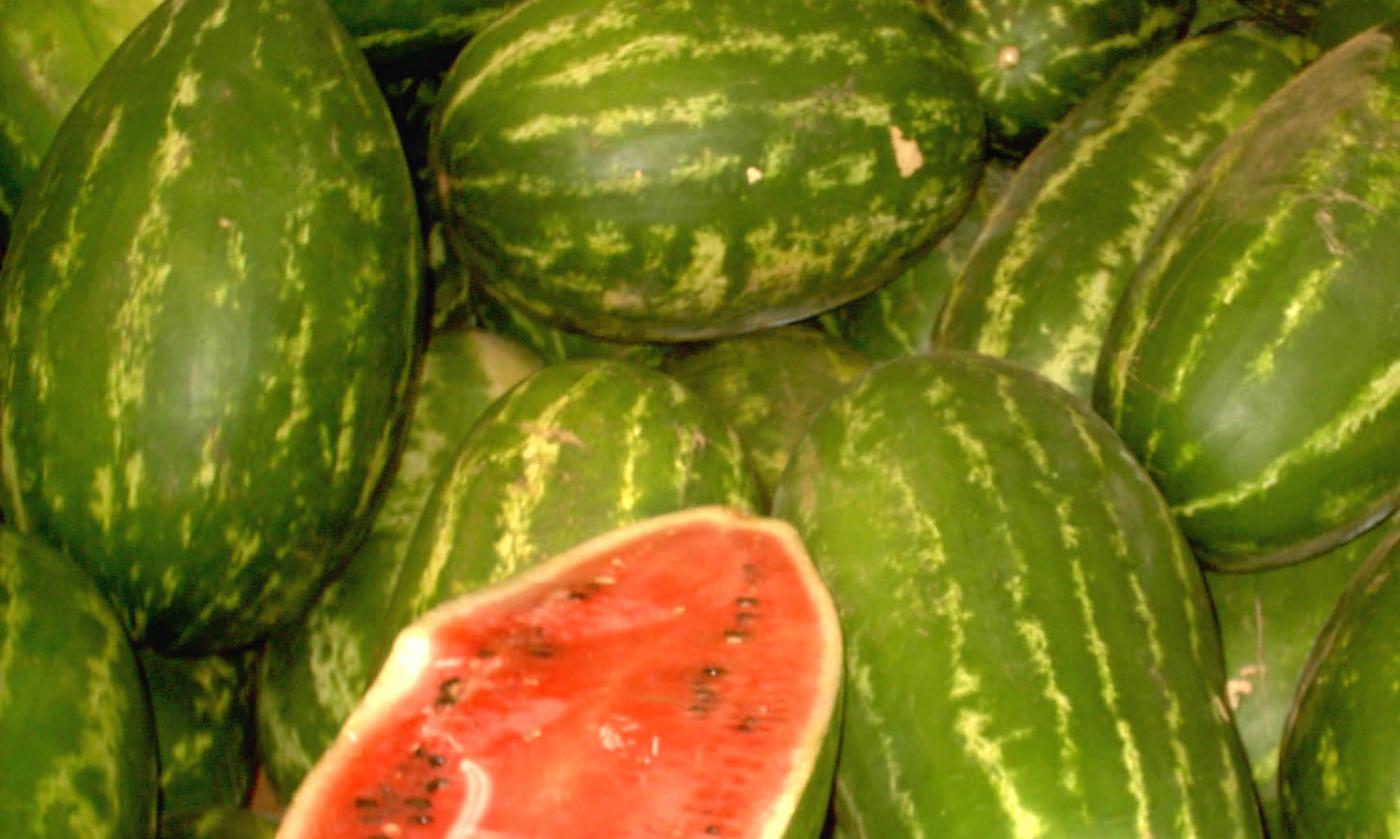
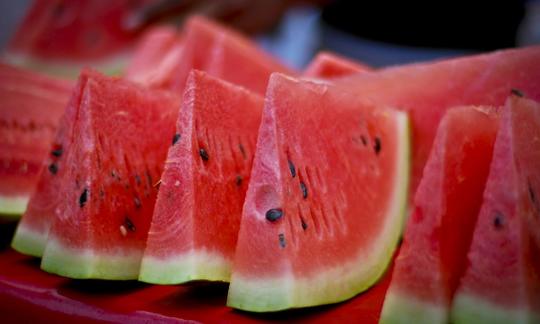

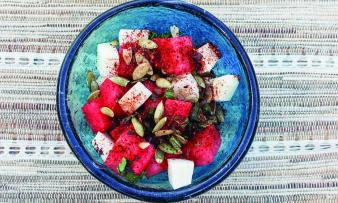
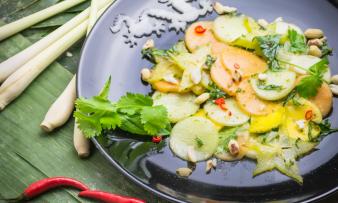
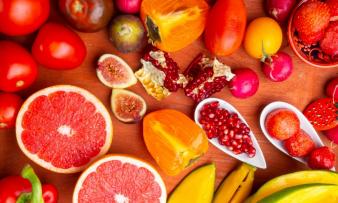




Comments